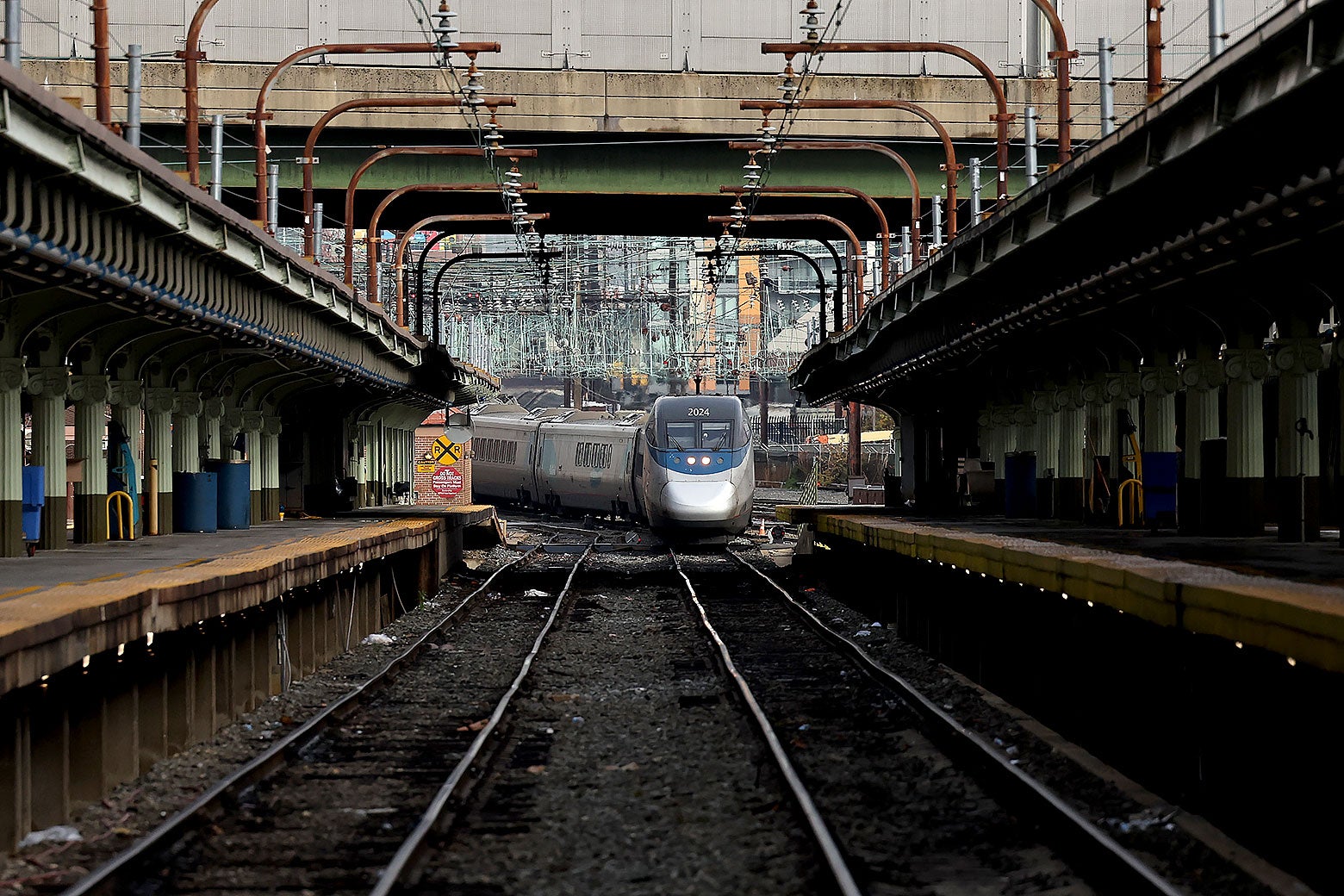Sign up for the Slatest to get the most insightful analysis, criticism, and advice out there, delivered to your inbox daily.
Alon Levy still remembers what time their bus came when they lived in Vancouver, Canada, more than a decade ago.
That’s important to understanding how Levy, the mathematics Ph.D. at New York University’s Transit Costs Project, figured out how we can fix the Northeast Corridor and deliver world-class transportation to the 50 million residents of America’s biggest megaregion. And no, it’s not because Levy has a good memory. It’s because the bus ran on a regular, repeating schedule.
Upgrading the Northeast Corridor, the train tracks that run from Boston to Washington by way of New York, Philadelphia, and Baltimore, with spurs to neighboring cities, has been the longtime dream of the region’s leaders and planners at Amtrak, which runs the intercity trains. Right before the COVID-19 pandemic, trains on the corridor moved nearly a million passengers each day—but the true scope of train travel demand, judging by the interminable traffic, frequent flights, and intercity bus service, is still constrained by high prices and poor service. A decade prior, Amtrak had drawn up a plan that would cut the train time between Boston and Washington from six and a half hours to three and a half hours. The problem was, it would have cost $117 billion—more than California’s project to build high-speed rail from scratch. And that was back in 2010.
According to the Transit Costs Project, more than 20 percent of travel time on the Northeast Corridor is “padding”—as anyone who has endured the 15-minute break in the bowels of Penn Station can understand—compared with 7 percent on well-run systems in Europe. What that means is, if the train could run a route in 100 minutes, the schedule gives it 120 to 130. (This is why your train can “make up” a delay—it was never going full steam to begin with.)
To eliminate the need for so much padding, Amtrak and the commuter rail companies still need to get on board with some global best practices. Those include level platforms, like on a subway, as opposed to the low platforms that require clambering in and out of trains and limit access for wheelchair users, forcing momentary stops to drag out over several minutes. The corridor also needs electrified trains, which are more reliable than the diesel locomotives that trundle along the route and can accelerate quickly out of the station.
Both of these changes would produce huge time savings around stops, cutting route times by 25 percent, the researcher Nolan Hicks concluded in a recent Transit Costs Project report. In an interview with City Lab last month, he compared the approach to the thrifty “moneyball” strategy of Oakland A’s general manager Billy Beane: “It’s like, I need a guy with a .350 on-base. I need a guy who can hit 43 home runs. And I need a guy with an RBI rating of whatever. That’s kind of what we did. … We can’t afford high-speed rail, but here’s what we can afford.“
Those are the changes that would make a takt schedule possible. The term, German for “cadence” or “pulse,” comes from industrial management, a field in which it’s important to understand the rate at which different processes come together to produce the final product. Imposing a consistent, coherent 30-minute takt (the report’s timetables are to the quarter-second) on the alphabet soup of public agencies that run trains in the Northeastern United States will not be easy. It once took Amtrak and the MTA four years to fix an escalator at Penn Station; even the MTA’s own subsidiaries, Metro-North and the Long Island Rail Road, won’t share trains, platforms, or maintenance practices. Still, there’s a price to pay for disorganization—in the case of high-speed rail on the Northeast Corridor, that price could be a hundred billion dollars.
Moreover, this idea of takt—getting work done in a certain interval to ease coordination between different groups—has broader lessons for our increasingly uncoordinated governance. The system is gaining popularity in construction management. You could imagine a city government establishing a takt system for housing approvals, in which permits move through each department at a predetermined rate. The basic principle isn’t rocket science: Everything is easier when it’s on a schedule. Of course German has a word for that.
Update, May 5, 2025: This article has been updated to reflect Levy’s pronouns.

